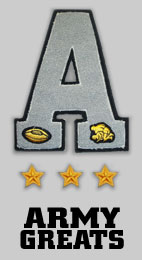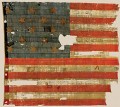To the Editor:
This is in response to what was presented in your publication on Oct. 22 as a review of ”The Long Gray Line,” Rick Atkinson’s nonfiction account of my West Point class, the class of 1966. I do not write to defend the book or to comment on a review of it, but to address the venomous attacks that are thinly veiled as elements of a book review – attacks against the class of 1966, thousands of other West Point graduates of the Vietnam era, service academies and the Army.
I certainly do not question the right of the reviewer or that of The New York Times to publish critical views of this or any other book. I do object, however, to misstatement and distortion of fact, especially when they go well beyond the bounds of literary criticism to discredit the honor and integrity of thousands of individuals, all of whom deserve fair treatment and many of whom can no longer speak for themselves.
The attack opens with the headline on Tom Buckley’s piece, ”Anyone for War?,” introducing his preposterous and malicious theme – that most of the West Point graduates of the class of 1966 were dishonorable cowards who shirked their duty to their country and did all they could to avoid serving in Vietnam. Mr. Buckley first takes the reader to the assembly, late in my final year at the United States Military Academy, at which we members of the graduating class were asked to select our first assignments in the Army from among the locations and units available. He asserts that all at this assembly ”were invited to waive their choice of a first assignment and volunteer for service in South Vietnam” but that ”only 98 cadets answered the call.” The rest of us, he goes on, ”headed for graduate school as planned, tried to get orders for someplace quieter or simply hoped for the best.” He charges ”a certain impropriety in the Army ordering tens of thousands of draftees into action while allowing the men who had been painstakingly trained to lead them to decide the matter for themselves.” The reviewer further questions the valor of our class, and other classes of the Vietnam era, by pointing to the number of our classmates killed in action in the war (30 members, or more than 5 percent, of the class of 1966) and saying that he ”had supposed that it was much higher.”
This attack seems to be based largely on the reviewer’s misunderstanding and misinterpretation of some of the key facts in this matter and his ignorance of other such facts. I trust the following will set the record straight.
The class of 1966 graduated with 579 men. At least 550 of them served in Vietnam. Thirty were killed in action there, and more than 100 others were wounded. Of those who did not serve in the war, five were Allied cadets who could not serve in Vietnam. Ten others died or were disabled before having an opportunity to serve there. Of those from our class who could have served in Vietnam, therefore, 98 percent did so.
To lend additional perspective: about nine million Americans served in the military during the Vietnam era; fewer than three million of them served in the war zone.
Back to that assembly in the spring of 1966, when we were asked to select the locations for our first tours in the Army. Yes, 98 members of the class were accepted that night for initial assignments to Vietnam. That was, in fact, the maximum number that could be accepted that night. As the Superintendent of the Academy stated in his annual report covering this period, ”the graduating class of 579 desired Vietnam duty in such numbers that a limiting quota of 98 had to be established by the Department of the Army to insure that the class would be distributed properly throughout the Army.”
Even these particular 98 graduates could not be sent immediately into the war zone; to do so before they received some additional training and at least some seasoning in the ”real Army” would have foolishly escalated the risk to them and tragically escalated the risk to the men they would be assigned to lead. In addition, West Point graduates and other regular Army officers were required to complete ranger training before arrival for duty in Vietnam. Three weeks of parachute training was also required of those going immediately to airborne units.
As the review points out, three West Point classes had battle death rates of more than 10 percent during World War II. In large measure, of course, the differences between these death rates and those of the Vietnam era reflect the relative magnitude and nature of the conflicts. In part, too, they resulted from the relative quality and rapid accessibility of medical attention. The officials who deliberated on these issues in 1966, some of whom were members of those World War II classes, were also convinced that graduates would be better prepared for leadership positions in Vietnam, and less likely to get themselves and their men killed at such high rates, if they got some pertinent training and at least a minimum of seasoning before being rushed into battle.
Apparently not aware that these quotas and policies had been established or not understanding why, Mr. Buckley alleges that we were cowards because we were not willing to accept the risks involved in ”volunteering” in larger numbers immediately, especially when that would have been the ”sound career move” given what he implies to have been the fleeting nature of the opportunity. He says that ”although many people had already decided that the Vietnam War was stupid, immoral or both, few yet thought that it was unwinnable. The prevailing opinion, in fact, was that once the military buildup had been completed, victory would come quickly.” If such an opinion prevailed anywhere, it certainly was not widely held in our class. The Department of the Army, too, took the longer and, as it unfortunately turned out for our country, the more accurate view – the war would not end quickly.
Beyond that initial group of 98, then, the remainder of the class carefully considered where and with which unit to serve before going to the war in turn. Some decided to select units they believed might soon be deployed to Vietnam. Others selected locations, like the border area between North and South Korea, that seemed to approximate most closely the physical environment and combat conditions of Vietnam. Still others chose units in Germany as their next training ground in our chosen profession. Only the top 5 percent of the class in academic standing was eligible to go directly on to graduate school before serving in units, but a good number of them chose units instead. In sum, the discussions in our class at the assembly that night, and during the weeks leading up to it, were not centered, as the reviewer leads one to believe, on how best to hide from the war but rather on how best to prepare for the war.
Mr. Buckley also discredits the integrity of cadets, graduates and the academy by referring to the cheating scandal that occurred there in 1976 and saying that the scandal ”exposed the cherished cadet honor code as a sham.” The honor code is no sham. It is a valuable discipline that has served cadets, graduates and the nation well, and continues to do so.
Finally, our nation clearly has not yet fully recovered from the Vietnam War. Deeply held convictions as well as doubts, both of which were felt in our class as they were throughout our country, cut deep and ugly wounds that are only thinly covered even now and still bleed. We would all like to see these wounds healed at last. It is past time, and we have much still to do together.
RON BARTEK




















































































































